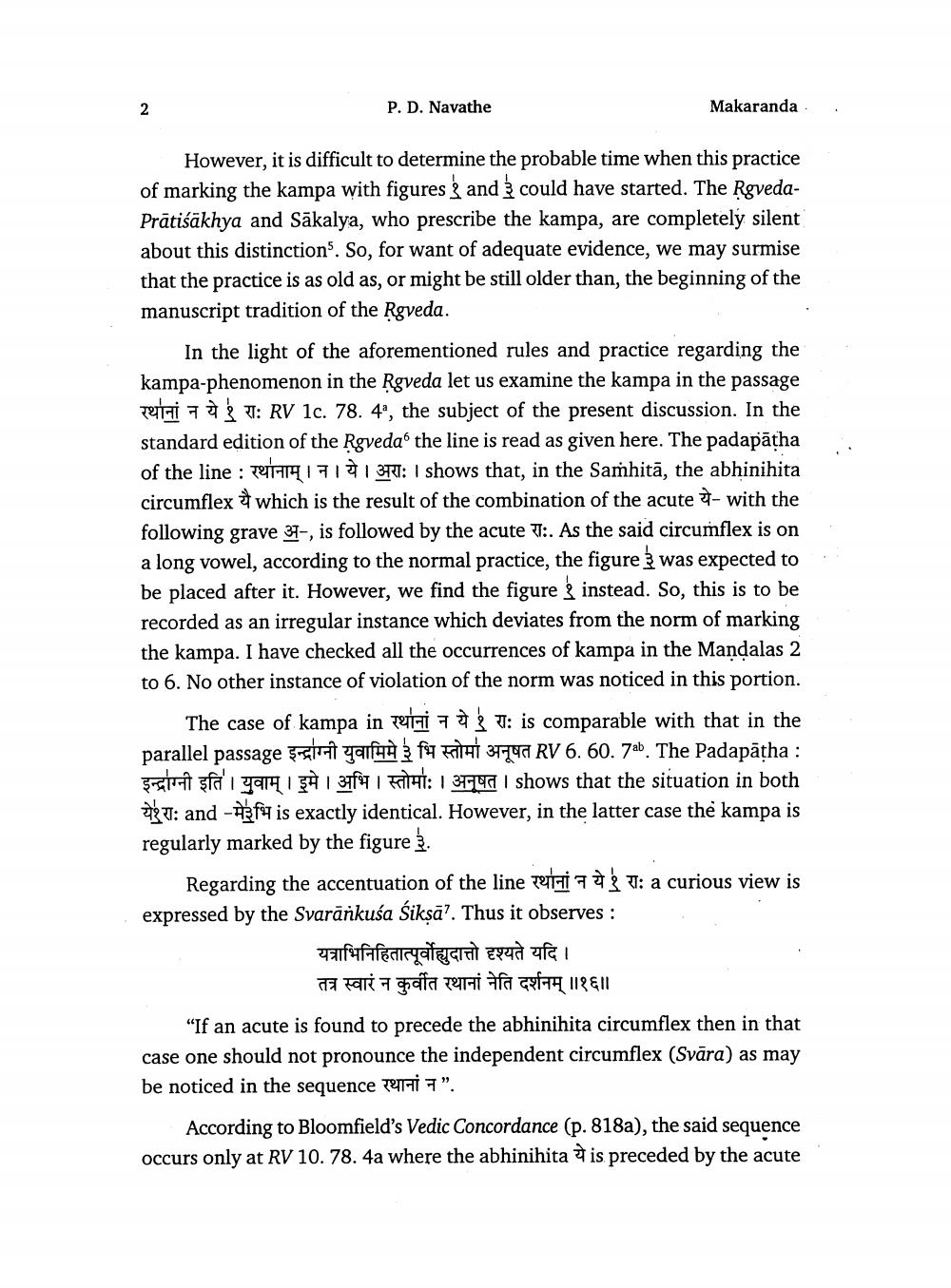________________
P. D. Navathe
Makaranda
However, it is difficult to determine the probable time when this practice of marking the kampa with figures and could have started. The RgvedaPrātiśākhya and Sākalya, who prescribe the kampa, are completely silent about this distinctions. So, for want of adequate evidence, we may surmise that the practice is as old as, or might be still older than the beginning of the manuscript tradition of the Rgveda.
In the light of the aforementioned rules and practice regarding the kampa-phenomenon in the Rgveda let us examine the kampa in the passage TUTI 70 T: RV 1c. 78. 49, the subject of the present discussion. In the standard edition of the Rgveda the line is read as given here. The padapātha of the line : T1171711 37: I shows that, in the Samhitā, the abhinihita circumflex #which is the result of the combination of the acute - with the following grave 37-, is followed by the acute T:. As the said circumflex is on a long vowel, according to the normal practice, the figure was expected to be placed after it. However, we find the figure instead. So, this is to be recorded as an irregular instance which deviates from the norm of marking the kampa. I have checked all the occurrences of kampa in the Mandalas 2 to 6. No other instance of violation of the norm was noticed in this portion.
The case of kampa in TUTI 741: is comparable with that in the parallel passage getrait yafua fu fil41 34749 RV 6. 60. 7ab. The Padapātha : Schista' tan ISI 3169 | iH: 35148 I shows that the situation in both 737: and of is exactly identical. However, in the latter case thè kampa is regularly marked by the figure 3.
Regarding the accentuation of the line Teti n : a curious view is expressed by the Svarāňkuśa śikṣā”. Thus it observes :
यत्राभिनिहितात्पूर्वोह्युदात्तो दृश्यते यदि । तत्र स्वारं न कुर्वीत रथानां नेति दर्शनम् ॥१६॥
"If an acute is found to precede the abhinihita circumflex then in that case one should not pronounce the independent circumflex (Svāra) as may be noticed in the sequence रथानां न".
According to Bloomfield's Vedic Concordance (p. 818a), the said sequence occurs only at RV 10. 78. 4a where the abhinihita & is preceded by the acute




